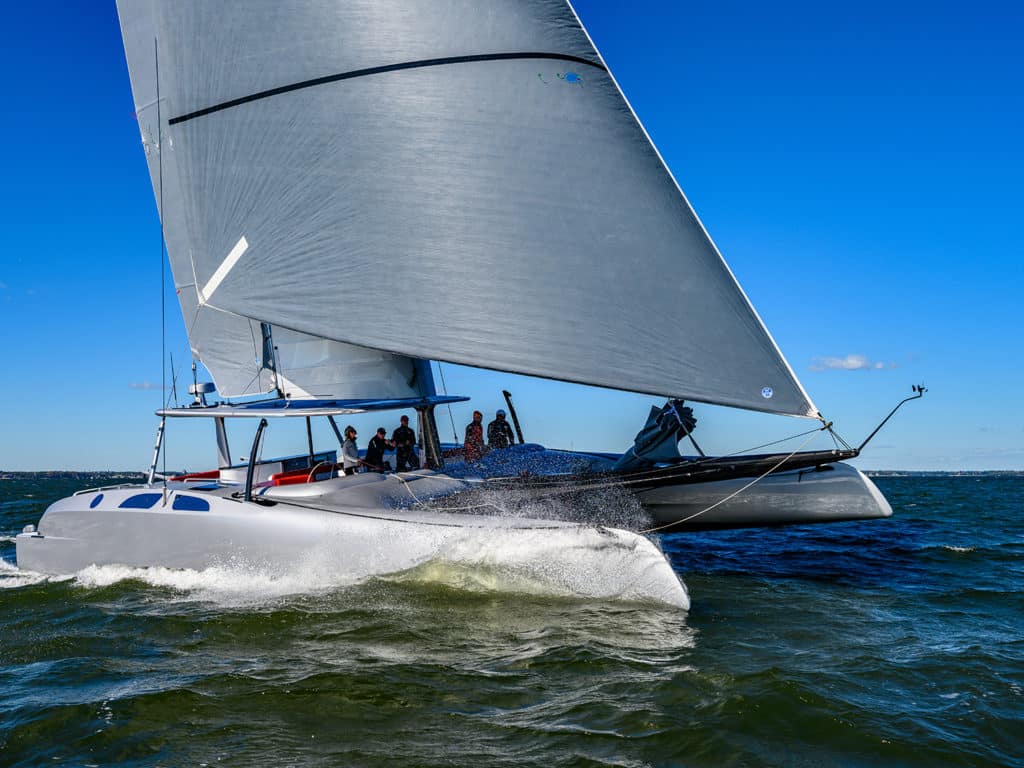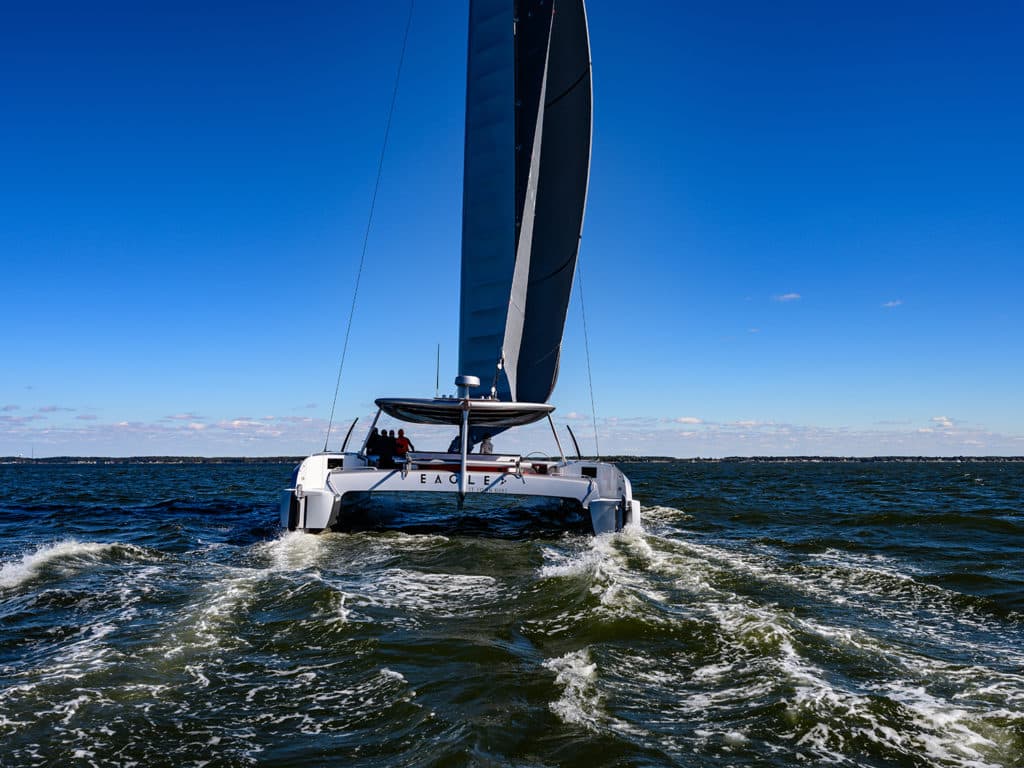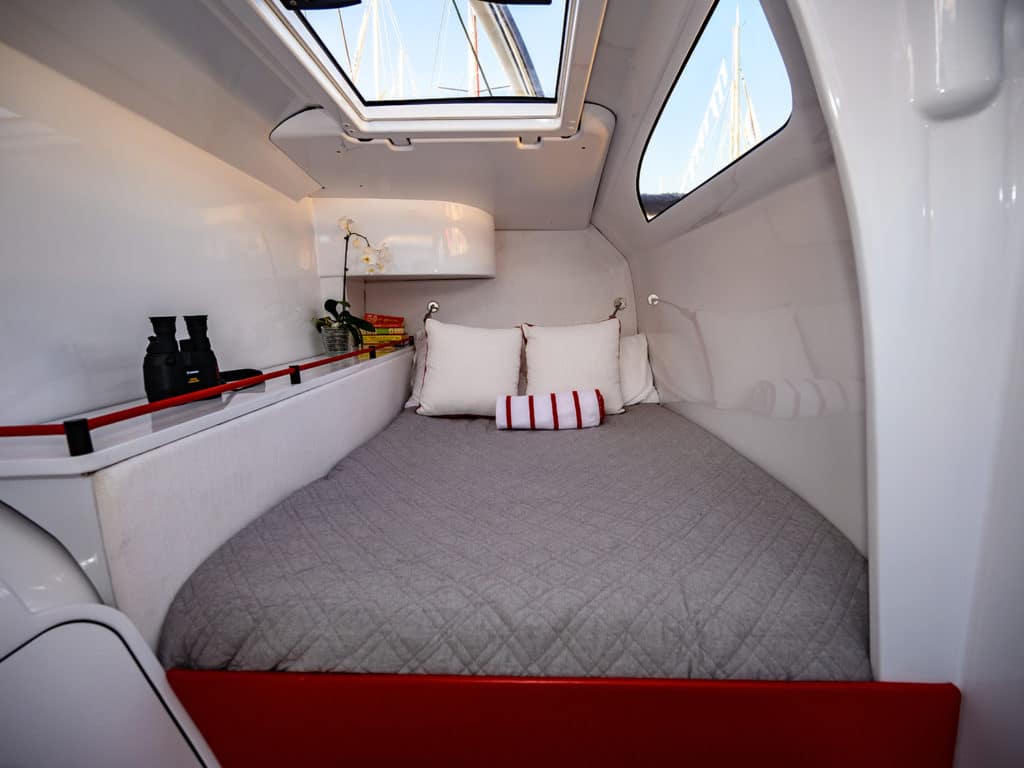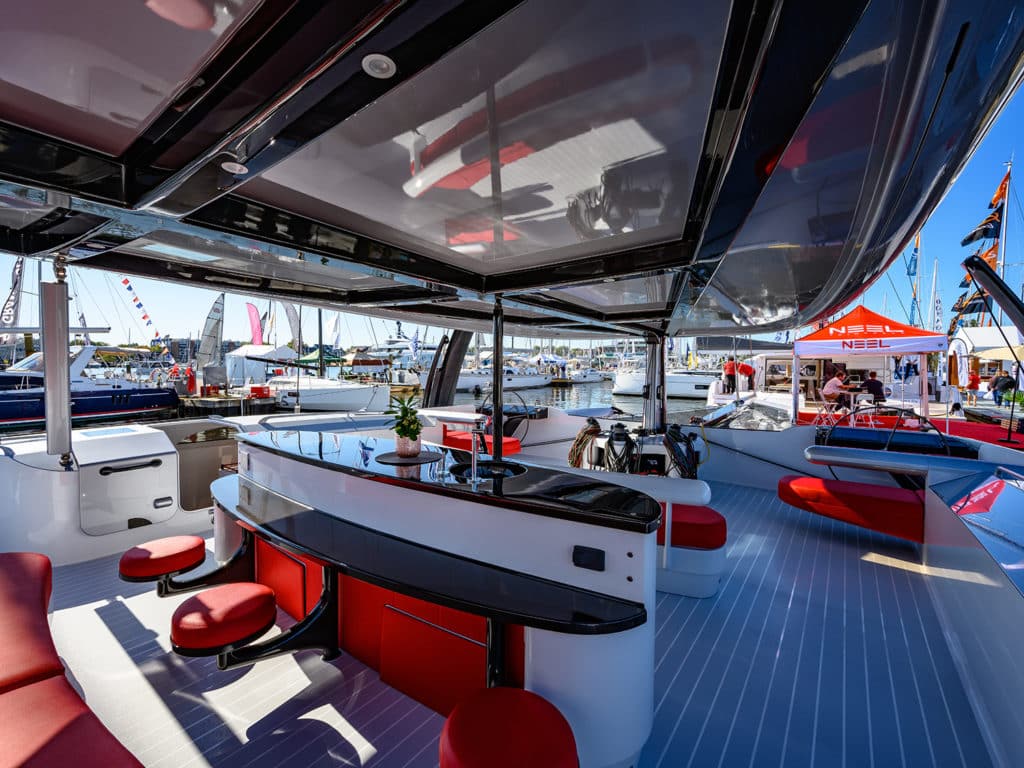
At A Glance
Price As Sailed: $9 million
Design Purpose: High-performance multihull
Crew List: Experienced crew of two to three; unlimited guest list
Please, someone get Tommy Gonzalez a ribbon. The Boat of the Year innovation award is all Eagle Class 53. The Bristol-based boat boatbuilder rolled into Annapolis with the sexiest, most technical and most mind-bending craft our Boat of the Year competition has seen in a long time.
The Eagle’s story is a long one, so I’ll spare you with an abbreviated version of how the radical 53-footer came to be, and more importantly, where it’s headed. As Gonzalez tells it, one Donald Sussman, the wealthy former owner of a Gunboat 90, which Gonzalez captained for many years, was awestruck by the foiling AC75s of the San Francisco edition of the America’s Cup. Why couldn’t they just install a rigid wing and foils on the Gunboat and get the same thrills? Sussman asked.
Doing so would have been like his mother’s dog chasing its tail, Gonzalez says. It’d be wiser to start afresh, with a new purpose-built concept yacht.
Enter sailmaker and catamaran savant Randy Smyth with a clever idea for a hybrid wing and soft sail, one that could be left standing when not in use. Recruiting a cast of design and engineering wizards with Cup credentials, Gonzalez created Fast Forward Composites and launched the Eagle Class concept.
What was envisioned to be a craft in the 40-foot size grew to 53, for safety and scale considerations, Gonzalez says. Smyth’s hybrid wing is the key element of the package, a concept refined over the past two years. The challenge with these types of big high-performance catamarans—foiling or not (and someday soon this boat will fully foil Gonzalez assures us)—is the ability to quickly control power in the wing. The line between flying and capsizing is razor thin.
The magic of the Eagle’s hybrid, Smyth says, is the ability to rapidly depower it and also allow it to feather when the vessel is at rest. When unpinned, the wing element swings like a weather vane. The high-aspect, square-top mainsail goes up a Harken track on the wing’s trailing edge; when the sail is doused, its cars stack inside a 2-foot piece of track, which is then detached and zipped neatly inside its sail bag.
The wing sits atop what could be mistaken for a rooftop lounge. “It’s not a sun deck,” Smyth says. “It’s for end-plating the wing. You get all sorts of efficiency off the bottom of the sail by doing so.”

He is excitable when explaining the additional benefits of the 1,080-pound, 80-foot-tall contraption. “You can get a huge range of power, and when overpowered, you can just pull on a string to rotate it out,” he explains. “The beauty is while there’s a lot of load on the mainsheet, there’s hardly any on the controls.”
You can also reef the soft element, which Gonzalez does for the initial BOTY sail test. With an angry squall lurking to the west, he has no interest in breaking the boss’s boat. Still, the judges climb on board and set off at a great rate before running out of wind on the Eastern Shore. What they had hoped would be a joyride is a letdown.
Gonzalez admits to being conservative and offers to sail again on a windier day. It’s a good thing that he does so. Later, in a stiff northwesterly, the judges board the sleek, silver carbon sculpture again. This time, with a full main locked to the top of the wing, they unfurl the masthead code zero, and are practically in Norfolk, Virginia, before they have to turn back.

“We got that thing really wired,” Allen says. “We were locked in at 20 to 25 knots. That was fun.”
Driving from the weather-helm station, just behind the forward beam, it’s a full-noise, wind-and-water-in-your-face experience, the judges all agree—but that’s the best, and really the only safe place from which to drive.
“Up front, you can see the bows and you’re up by the mast where everything is happening,” Stewart says. “When the weather hull is skimming like it was, it’s not throwing up any water, so it was pretty dry.”

Powlison had a good rip across the bay too, with Gonzalez coaching him all the way. “This is a boat that you could get in a lot of trouble with if you didn’t know what you were doing,” Powlison says. “It has a high fun-to-risk ratio, but it’s a blast.”
Gonzalez is fully aware of how quickly things could go wrong, but he says each owner will be guided through a step-by-step progression to understand the wing and sailing the boat safely on its big carbon C-foils. When you buy the boat, he says, you get driving lessons too.
“You’re going to want to put some sunblock on because you’re going to get windburn,” Allen says. “Especially when you’re driving; you can see the hulls and stuff in the water. The steering is smooth, and it all felt highly responsive. The guests are behind you and not distracting, which is a good thing, because you need to be alert.”
As beautifully finished as the Eagle 53 is, it’s still early in the boat’s development, Gonzalez says. The next phase is the implementation of legitimate lifting T-foils, intelligent software and sensors that will automate ride height. This cat, in other words, is just scratching the surface.
See All Winners
Other Winners:









